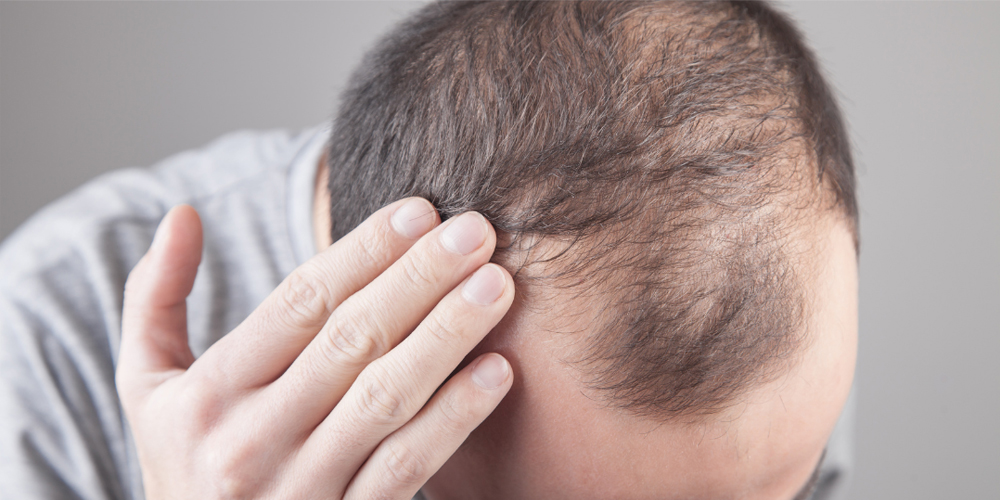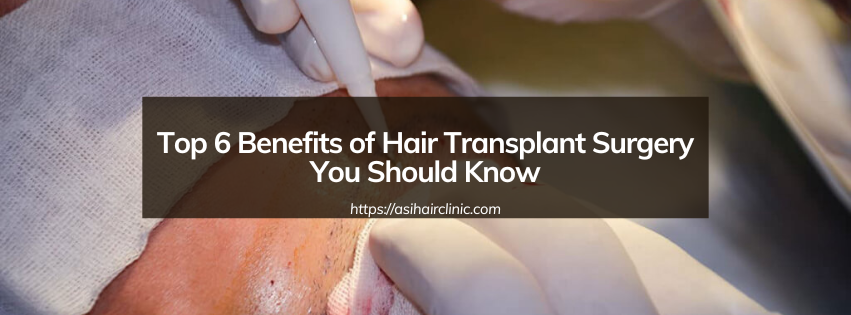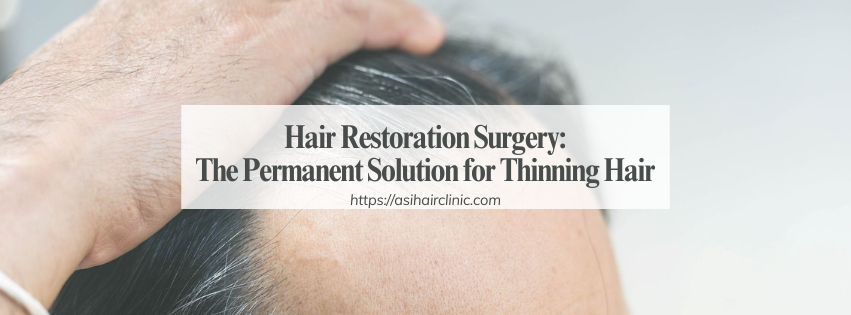Hair Transplant Procedures - How Do They Work?
Hair loss can be a distressing experience for many individuals, leading to a significant impact on their self-esteem and overall quality of life. Fortunately, advancements in medical science have led to innovative solutions such as Hair Transplant Procedures, which offer effective solutions for those seeking to restore their hair. In this article, we will delve deeply into the mechanics behind these procedures, exploring various methods, techniques, and important considerations for potential candidates.
1. Understanding Hair Loss
Before diving into the specifics of Hair Transplant Procedures, it is essential to understand the underlying causes of hair loss. The factors contributing to hair thinning and baldness are multifaceted and can vary from person to person.
1.1. Genetic Factors
Genetic predisposition plays a crucial role in hair loss, particularly in conditions like androgenetic alopecia, commonly known as male or female pattern baldness. This hereditary condition results in gradual hair thinning, typically starting at the temples or crown of the head.
The genetic influence leads to hormonal changes that affect hair follicles, resulting in shorter hair growth cycles and decreased hair density over time. Understanding these genetic roots is fundamental for individuals considering hair restoration options.
1.2. Environmental and Lifestyle Influences
In addition to genetic factors, environmental influences also contribute significantly to hair loss. Stress, pollution, poor nutrition, and unhealthy lifestyle choices can lead to accelerated shedding and hinder hair regrowth.
For instance, high levels of stress trigger the release of hormones such as cortisol, which can disrupt the natural hair growth cycle. Additionally, inadequate nutrition can deprive hair follicles of essential vitamins and minerals, leading to weakened strands and further loss.
1.3. Medical Conditions
Certain medical conditions can exacerbate hair loss, making it vital to consult healthcare professionals. Conditions such as thyroid disorders, autoimmune diseases, and scalp infections can profoundly affect hair health and growth.
Understanding these factors is not just academic; it's crucial for prospective patients to address any underlying issues before pursuing Hair Transplant Procedures.

2. Types of Hair Transplant Procedures
When it comes to Hair Transplant Procedures, there are several techniques available, each with its unique advantages and methodologies. Understanding these different types will help patients make informed decisions about their hair restoration journey.
1.1. Follicular Unit Extraction (FUE)
FUE is one of the most popular and minimally invasive techniques used today.
This method involves extracting individual hair follicles from the donor site-usually the back of the head-and transplanting them into the balding areas. The process typically utilizes specialized tools that ensure precision and minimize damage to surrounding tissues.
One of the key benefits of FUE is its ability to leave minimal scarring, allowing patients to wear short hairstyles post-procedure. Additionally, since no surgical strips are removed, recovery tends to be faster compared to traditional methods.
However, FUE might not be suitable for everyone. Individuals with extensive baldness or insufficient donor hair may face limitations, making it essential to evaluate candidacy closely.
1.2. Follicular Unit Transplantation (FUT)
FUT, also known as the strip method, involves harvesting a strip of skin containing hair follicles from the donor area.
Once the strip is removed, it is dissected into smaller grafts, which are then implanted into the balding areas. While FUT can yield a larger number of grafts, it does require sutures and may leave a linear scar at the donor site.
Patients often choose FUT when they require extensive coverage since this technique generally provides a higher yield of hair follicles in a single session. Nevertheless, the decision between FUE and FUT should consider lifestyle preferences and aesthetic outcomes.
1.3. Robotic Hair Restoration
With advancements in technology, robotic-assisted hair transplant procedures have emerged as a cutting-edge option. These procedures utilize robotic systems to assist surgeons in harvesting and implanting hair follicles.
The primary advantage lies in precision and efficiency. Robots can analyze the angles and depths required for follicle extraction, reducing human error and optimizing transplant success rates.
However, as with any emerging technology, costs may be higher, and availability may vary by location. Furthermore, patients should weigh the pros and cons of robotic assistance against traditional techniques based on their specific needs and circumstances.

3. Preparing for a Hair Transplant Procedure
Proper preparation is critical for the success of Hair Transplant Procedures, ensuring patients optimize their chances of achieving satisfying results.
1.1. Consultation and Assessment
The first step toward a successful hair transplant is an in-depth consultation with a qualified specialist. During this meeting, the doctor will assess the patient's medical history, hair loss pattern, and overall health.
This assessment allows the surgeon to recommend the most suitable procedure tailored to the individual's needs. It’s also an opportunity for patients to express their goals and expectations, ensuring alignment with the anticipated outcomes.
1.2. Pre-Procedure Guidelines
Once the decision is made, adhering to pre-procedure guidelines is crucial. Patients may receive instructions regarding medications to avoid, dietary adjustments, or lifestyle modifications before the surgery.
For example, avoiding blood thinners, smoking, and excessive alcohol consumption can enhance healing and reduce the risk of complications. Following these guidelines diligently can make a significant difference in the overall success of the procedure.
1.3. Psychological Preparation
Beyond physical preparations, psychological readiness is equally important. Managing expectations and understanding the recovery process can alleviate anxiety and foster a positive mindset during the journey.
Patients should be well-informed about the timeline for visible results and the possibility of temporary shedding post-surgery. An optimistic outlook can boost confidence and facilitate emotional resilience throughout the process.
4. Post-Transplant Care
Post-operative care is as vital as the procedure itself, significantly influencing the healing process and the final results of Hair Transplant Procedures.
1.1. Immediate Aftercare
Right after the procedure, patients usually experience some redness, swelling, and discomfort in the donor and recipient areas. Surgeons typically provide detailed instructions for immediate post-operative care, including how to clean the scalp and manage pain.
It’s essential to follow these instructions meticulously. Avoiding strenuous activities, direct sunlight, and maintaining cleanliness can aid in preventing complications and promoting healthy healing.
1.2. Long-term Care and Maintenance
As the transplanted hair begins to grow, implementing a long-term hair care routine will be necessary. Using gentle shampoos and conditioners specifically designed for sensitive scalps can ensure optimal health for both existing and new hair.
Regular follow-up appointments with the surgeon can help monitor progress and address any concerns promptly. Incorporating a balanced diet rich in vitamins and minerals can also support hair health in the long run.
1.3. Managing Expectations and Emotional Impact
The journey doesn’t end with the transplant; managing expectations is crucial for patient satisfaction. Transplanted hair goes through phases, including shedding and regrowth, which can be confusing for some individuals.
Open communication with the surgical team can clarify what to expect at each stage, alleviating anxiety and improving the overall experience. Emotional support from friends, family, or support groups can also play a pivotal role in navigating the psychological landscape following the procedure.
Conclusion
In conclusion, Hair Transplant Procedures present an effective solution for many battling hair loss, offering hope and restoring confidence. Understanding the nuances of these procedures, from the types available to preparation and post-care, empowers individuals to make informed decisions about their hair restoration journey. As research and technology continue to evolve, the future of hair transplantation holds great promise, potentially benefiting countless people looking to regain their hair and self-esteem. Those considering this path should consult qualified professionals, thoroughly explore their options, and approach the process with realistic expectations and enthusiasm. Ultimately, the journey of restoring hair is not just about the physical transformation; it represents a profound commitment to one's self-worth and personal identity.
LATEST POSTS








